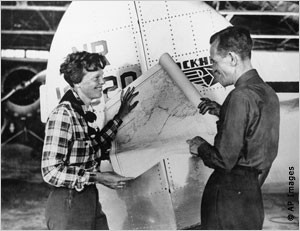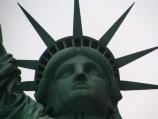Amelia Earhart, Fred Noonan, and their airplane disappeared somewhere in the Pacific in 1937. They had left Miami, Florida, on June 1, 1937, with the goal of flying around the world. On June 29, they had reached Papua New Guinea, and they had around 7,000 more miles to go. Then they failed to report. The government looked for their airplane for weeks, but no evidence was ever found. People continue to look for their remains. Children can learn more at: Earhart Disappearance.
Susan B. Anthony dollars were first issued in 1979. They were introduced into the economy from 1979 to 1981 and again in 1999.
Jack Gantos (born Mount Pleasant, Pennsylvania, 1951) writes books for children and young adults. His book Joey Pigza Loses Control received a 2001 Newbery Honor Award. His autobiography Hole in My Life earned both a 2003 Sibert Award and a 2003 Printz Award. Part autobiography, part novel, Dead End in Norvelt gained both the 2012 Newbery Medal and the 2012 Scott O’Dell Award for Historical Fiction. Children can visit his website at: Jack Gantos.
Jean Craighead George (born Washington, DC, 1919; died Valhalla, New York, May 15, 2012) wrote and illustrated at least 100 books for children. Her My Side of the Mountain earned a Newbery Honor Award in 1960. Julie of the Wolves received the 1973 Newbery Medal. Children could visit a website devoted to her at: Jean Craighead George.
Cynthia Kadohata (born Chicago, Illinois, 1956) has written at least twelve books for children. Her book Kira-Kira received the 2005 Newbery Medal. Other works include Checked and A Place to Belong. Children can learn more at: Cynthia Kadohata.

Thurgood Marshall
Thurgood Marshall (born Baltimore, Maryland, 1908; died Washington, DC, January 24, 1993) was the first African American to serve on the Supreme Court. For more than twenty years he directed the legal portion of the NAACP. He was victorious in the case of Brown v Board of Education, ending “separate but equal” public schools. He was nominated to the Supreme Court by President Lyndon Johnson, and he was an associate justice for 24 years. Children could learn more at: Thurgood Marshall.
Darren Shan (born London, England, 1972) writes horror and fantasy books for young adults. His books include the Demonata series and The Saga of Darren Shan series. Young adults can visit his website at: Darren Shan.
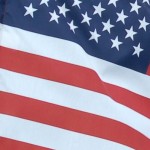 Independence Day is tomorrow! Today would be a good day to organize some activities. Children could make a red, white, and blue dessert by layering strawberries, blueberries, and yogurt in plastic glasses. They could practice singing patriotic songs, and they could organize parades. They could find some great coloring pages at: Crayola Fourth of July.. They could also read The Night before the Fourth of July, written by Natasha Wing and illustrated by Amy Wummer.
Independence Day is tomorrow! Today would be a good day to organize some activities. Children could make a red, white, and blue dessert by layering strawberries, blueberries, and yogurt in plastic glasses. They could practice singing patriotic songs, and they could organize parades. They could find some great coloring pages at: Crayola Fourth of July.. They could also read The Night before the Fourth of July, written by Natasha Wing and illustrated by Amy Wummer.
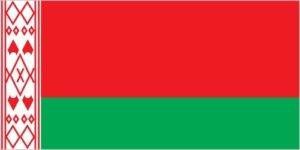
Flag of Belarus
Belarus celebrates Independence Day. The country remembers the 1944 liberation of its capital Minsk from the Nazis. This land-locked country is slightly smaller than the state of Kansas. The land is flat and is significantly covered with marshland. Almost ten million people live in this eastern European country that exports chemicals and machinery. Children can color a picture about Belarus at: Belarus Art. They could also learn more at: Belarus.
Idaho Flag
Idaho became the forty-third state of the United States in 1890. Its name translates as “gem of the mountain.” It is the fourteenth largest state, but it is the thirteenth least populated state. Boise is the state capital, and main sources of income are lumber, potatoes, and mining. Idaho was explored during the Louis and Clark expedition. It experienced a gold rush in 1860. Children could visit an Internet site at: Idaho. Idea: Idaho is known for its potatoes. Children could investigate why and how Idaho grows so many potatoes. They could also make potato pancakes.
Samuel de Champlain (born Brouage, France, 1567; died Quebec, Canada, 1635) has been called the “Father of New France.” He left France in 1603 to find the Northwest Passage. He did explore the St. Lawrence River and traveled as far as Niagara Falls. In 1608 he founded a fur trading post on the St. Lawrence River and named it Quebec. Over the years he explored more of the region and became good friends with the Algonquin and Huron Indians. He found Lake Champlain and named it after himself.
George M. Cohan (born Providence, Rhode Island, 1878; died New York, New York, November 5, 1942) was an important actor, writer, and producer of American theater. He wrote about forty plays and musicals. However, he is most famous for his songs, including “Give My Regards to Broadway” and “I’m a Yankee Doodle Dandy.” Children can learn more at: George M. Cohan.
Samuel Huntington (born Windham, Connecticut, 1731; died Norwich, Connecticut, January 5, 1796) was president of the Continental Congress and signer of the Declaration of Independence, representing Connecticut. He was also the third governor of Connecticut. He stated in a letter to George Washington, “I will always love my Country.” Children could learn more at: Samuel Huntington.
 United States celebrates Independence Day. It declared itself free of English rule in 1776. Interestingly, only two people, John Hancock and Charles Thompson, signed the Declaration of Independence that day. Most of the representatives signed the document on August 2, 1776. Idea: Children could read Fireworks, Picnics, and Flags: The Story of the Fourth of July Symbols by James Cross GIblin and Ursula Arndt. Children could plan and carry out a Fourth of July parade. They could also learn more at: Fourth of July.
United States celebrates Independence Day. It declared itself free of English rule in 1776. Interestingly, only two people, John Hancock and Charles Thompson, signed the Declaration of Independence that day. Most of the representatives signed the document on August 2, 1776. Idea: Children could read Fireworks, Picnics, and Flags: The Story of the Fourth of July Symbols by James Cross GIblin and Ursula Arndt. Children could plan and carry out a Fourth of July parade. They could also learn more at: Fourth of July.
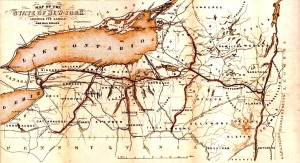 Construction of the Erie Canal began in 1817. The Erie Canal opened on October 26, 1825. It joined the Atlantic Ocean (via the Hudson River) and Lake Erie. Approximately 363 miles long, it had 36 locks. Previously goods had to be shipped by wagon and pack animals. The canal cut transportation costs by 95 percent. Children can view an excellent video at: Erie Canal.
Construction of the Erie Canal began in 1817. The Erie Canal opened on October 26, 1825. It joined the Atlantic Ocean (via the Hudson River) and Lake Erie. Approximately 363 miles long, it had 36 locks. Previously goods had to be shipped by wagon and pack animals. The canal cut transportation costs by 95 percent. Children can view an excellent video at: Erie Canal.
Statue of Liberty was given to the United States by France in 1884. The statue was presented to Levi P. Morton, the US ambassador to France, in Paris. The statue was then taken apart and shipped to the United States. The statue reached our shores on June 17, 1885. However, the pedestal was not yet ready. The statue was formally revealed on October 28, 1886. Children can learn more at an excellent site: Statue of Liberty.
